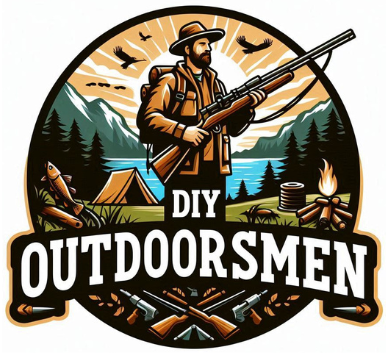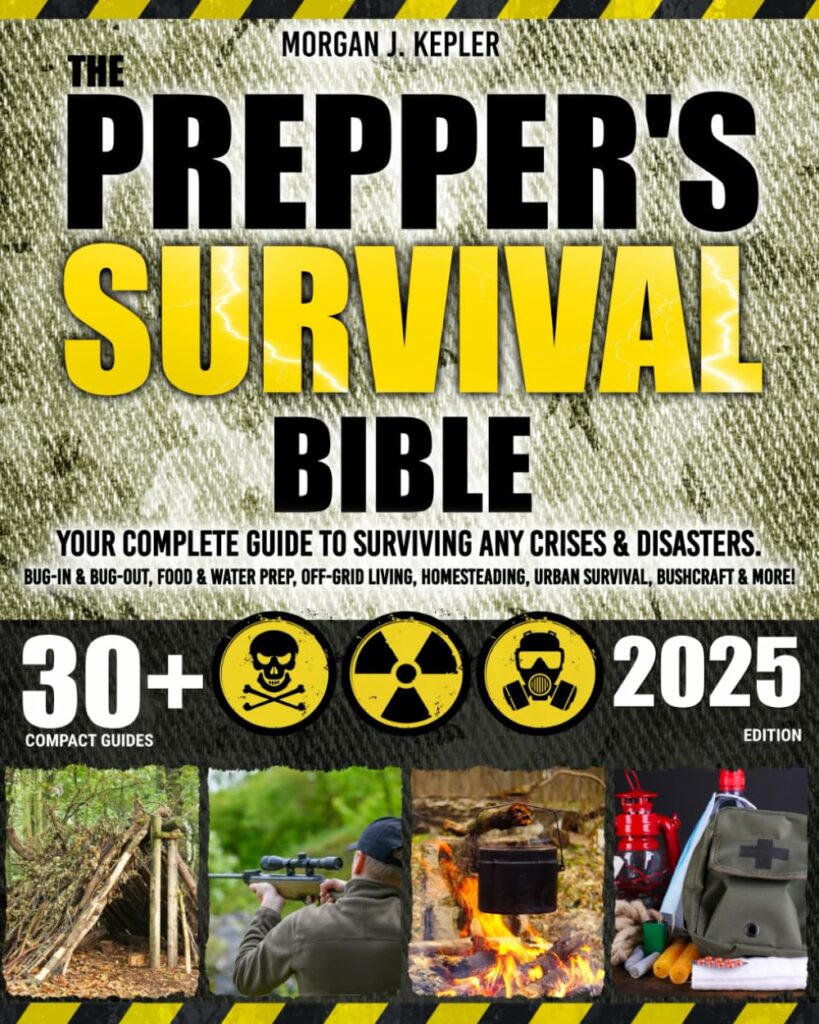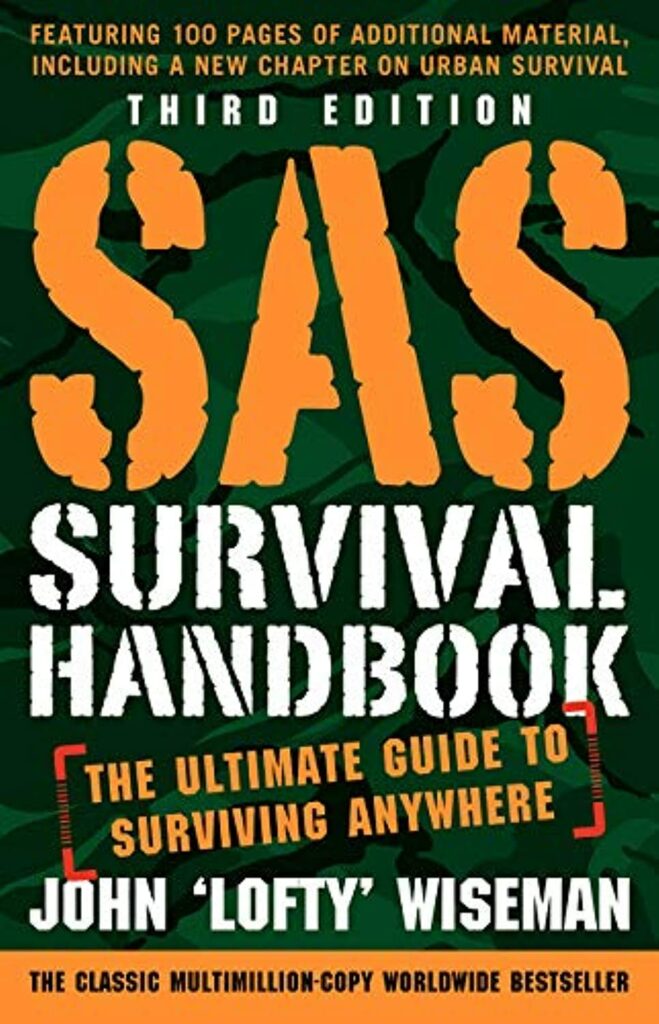Contents
- 1 Essential Survival Gear for the DIY Outdoorsman
- 2 Starting Your Survival Adventure
- 3 Key Considerations Before Heading Out
- 4 In-Depth Techniques for Survival
- 5 Supplying Your Adventure
- 6 Frequently Asked Questions
- 7 Additional Tips for Outdoor Safety
- 8 Survival Skills and Improvisation in Nature
- 9 Maintaining Your Survival Mindset
- 10 Wrapping Up Your Survival Skills
I stumbled upon early on that developing survival skills transforms the way I experience the outdoors. For the DIY outdoorsman, learning survival techniques means being prepared for unexpected challenges. In this article, I share my insights on essential survival skills, practical equipment, and planning strategies to help you feel more confident when spending time in nature.
QUICK LOOK: Survival Skills for the Outdoorsman
- Fire Making in Adverse Conditions: Building a fire when conditions are damp or windy is challenging. I learned that selecting dry fuel, shielding the fire, and practicing different fire-starting techniques, such as using flint and steel, increases the chances of success.
- Constructing Emergency Shelters: In extreme weather, having a makeshift shelter is essential. The key here is to work quickly and use available resources effectively. This skill often means experimenting with different configurations until you find a method that works best for the situation at hand.
- Water Procurement and Purification: I have spent time learning various methods to locate water sources and make water safe for drinking. Techniques I have used include boiling, using a portable water filter, or purification tablets.
- Finding Food: In a survival situation, next to shelter and water, finding and procuring food to maintain your energy is extremely important to your long-term survival chances.
- Signaling for Help: Communication can be lifesaving in an emergency. Tools like mirrors, whistles, or even a small portable beacon increase your chance of being located. Being able to signal effectively can turn a dangerous situation into a manageable one.
Essential Survival Gear for the DIY Outdoorsman
One of the first things I learned was that having the right gear makes a big difference in outdoor survival. I have found that proper equipment can help protect against weather, hazards, and unexpected situations. It is very important to choose items that are reliable and suited for basic survival needs. With a clear list of essentials, you can better prepare for any outdoor adventure.
Below are some items I rely on when venturing into the wild:
- Quality Knife: A sturdy knife is a vital tool for cutting cordage, food preparation, or even as a self-defense mechanism.
- Fire-Starting Kit: I always carry waterproof matches, a lighter, and fire starters so I can light a fire in wet conditions.
- Multi-tool: A multi-tool combines several functions such as cutting, screwing, and sawing into one compact device.
- Water Filter or Purification Tablets: Clean water is very important. A filter or tablets help ensure water safety when natural sources are available.
- Compass and Map: Even if I rely on a GPS device, I always have a map and compass as backup in case technology fails.
- Emergency Shelter: Lightweight tents or emergency bivy sacks can provide critical protection from wind or rain.
These pieces of equipment form the backbone of any survival kit. I have learned that investing in durable gear pays off when nature is unpredictable and conditions can change fast. Taking the time to choose high-quality items can make a huge difference between a smooth experience and an emergency situation.
Starting Your Survival Adventure
Before I kicked things off into the wilderness, I practiced basic survival skills in a safe environment. Gradually increasing the distance and difficulty of my outings helped build confidence and experience.
When planning my trips, I always start by identifying nearby areas where I can practice setting up a shelter, building a fire, and testing my navigation tools. Beginning with small trips ensures that if a minor problem occurs, it can be managed quickly and effectively.
Knowing and practicing the fundamentals is very important. I learned that understanding basic techniques, such as fire making or water purification, helps reduce the stress when facing unexpected challenges. Regular practice builds muscle memory and helps you maintain a sense of calm when conditions become tough.
Key Considerations Before Heading Out
Before any outdoor excursion, I take time to consider several important factors. Proper preparation means thinking ahead about potential risks and how to address them. Detailed planning aids in minimizing risks while maximizing enjoyment on your adventure.
I focus on several areas before stepping into nature:
- Weather Forecast: I check the local forecast to understand what conditions to expect. Calm weather minimizes risks, while harsh conditions might call for a plan change.
- Terrain and Navigation: I review maps and plan my route carefully to avoid hazardous terrain. Knowing my location and having emergency routes mapped out is a very important habit.
- Communication: When venturing into remote areas, I carry a fully charged cell phone or a satellite communication device. I also let someone know my planned route and expected return time.
Sometimes, I organize my planning around a checklist. This detailed approach helps keep the essentials top of mind. I also review local safety guidelines and any legal requirements for using certain areas. This information comes in handy, particularly in protected areas or regions with strict outdoor regulations.
In-Depth Techniques for Survival
Advancing my outdoor skills meant exploring some deeper survival skills that go beyond the basics. I have spent time learning and practicing methods that give me options in emergencies. These techniques require an understanding of natural resources and the ability to adapt to varied conditions.
Some advanced skills that have proven effective for me include:
Fire Making in Adverse Conditions: Building a fire when conditions are damp or windy is challenging. I learned that selecting dry fuel, shielding the fire, and practicing different fire-starting techniques, such as using flint and steel, increases the chances of success.
Constructing Emergency Shelters: In extreme weather, having a makeshift shelter is essential. I study natural materials like branches, leaves, and even snow to create a temporary barrier. The key here is to work quickly and use available resources effectively. This skill often means experimenting with different configurations until you find a method that works best for the situation at hand.
Water Procurement and Purification: I have spent time learning various methods to locate water sources and make water safe for drinking. Techniques I have used include boiling, using a portable water filter, or purification tablets. Moreover, identifying signs of water such as animal tracks or lush vegetation is very helpful when you are in an unfamiliar area.
Signaling for Help: Communication can be lifesaving in an emergency. Tools like mirrors, whistles, or even a small portable beacon increase your chance of being located. I practice creating visible signals using natural light or arranging stones in patterns that attract attention from search parties or rescuers. Being able to signal effectively can turn a dangerous situation into a manageable one.
Practicing these techniques has allowed me to manage emergency situations more confidently. Although not every trip requires advanced survival skills, having them ready means that when conditions switch up unexpectedly, you are better prepared to handle the situation.
Supplying Your Adventure
Understanding the importance of a well-stocked supply kit is very important. I always make an effort to pack items that not only cover immediate needs but also support minor emergencies. The right supplies can extend your time outdoors and make the difference between handling a challenge or facing serious consequences.
I include the following supplies in my kit:
- Food Provisions: I pack nutrient-dense snacks, freeze-dried meals, and extra energy bars to ensure I have enough calories. Non-perishable items are my go-to, as they provide lasting energy during extended trips.
- Water and Hydration Tools: Carrying extra water is fundamental. I bring a hydration system or sturdy water bottles along with additional means of purifying water when needed.
- First Aid Supplies: A compact first aid kit including bandages, disinfectants, and necessary medications is always part of my bag. I also add specialized supplies based on the nature of my outing.
- Extra Clothing and Insulation: Weather can change quickly. I pack layers of moisture-wicking and insulating clothing, ensuring that I stay warm or cool depending on the environment.
- Navigation and Communication Tools: Even on short trips, a map, compass, and a portable communication device are essential. I always double-check that all devices are charged and have backup power sources ready.
Each item in my supply kit serves a purpose, and having a checklist helps me avoid forgetting something important. Over time, I have customized my kit based on different environments and the duration of my trips. This approach gives me a reliable format that adapts to various challenges and ensures that I stay as safe as possible when out in the wild.
Frequently Asked Questions

I often receive questions about survival skills. Here are some of the common questions along with my honest responses:
What are the core survival skills a DIY outdoorsman should learn?
I believe the basics include fire creation, shelter building, water procurement and purification, as well as navigation. Regular practice of these skills ensures that when unexpected events occur, you have a plan in place to deal with them.
How can I practice survival techniques safely?
Start by practicing in controlled environments such as your backyard or a safe clearing. Attend local workshops or try practice trips near home with a trusted friend. Gradual exposure helps build experience without overwhelming you.
What should I do if I get lost?
Stay calm and try to retrace your steps. Use your compass and map to locate familiar landmarks. Once you realize you cannot easily reorient yourself, signaling for help with a whistle or mirror is very important.
How often should I update my survival kit?
I update my kit every season. Changing weather and terrain conditions prompt me to tweak my supplies. It is wise to check items for wear and expiration regularly, so nothing fails when you need it most.
Additional Tips for Outdoor Safety
Beyond the basics, there are several extra measures that can really take your outdoor experience up a notch. Spending time researching local flora and fauna can be extremely useful.
Understanding which plants are edible and which animals to avoid is a key part of staying safe in nature. In some regions, knowing how to identify venomous creatures or hazardous terrain features makes a big difference in how you prepare for your adventure.
Another important tip is to always share your itinerary with someone you trust. Letting a friend or family member know where you plan to go and how long you expect to be gone adds an extra layer of safety.
This way, someone will know to check in with you if you don’t return on time. In remote areas, even a small detail such as leaving a note at the trailhead can be life-saving if unforeseen circumstances arise.
Survival Skills and Improvisation in Nature
Nature often throws curveballs. While having a well-stocked kit is very important, the ability to improvise can sometimes be just as critical. For example, if you find yourself without proper shelter materials, look around for natural resources.
Fallen branches, large leaves, and even snow can be used to put together a temporary cover. Learning to harness your surroundings not only makes survival easier but also deepens your connection with nature. Experimenting with different setups in various conditions helps you learn what works best in real situations.
There have been times when I had to get creative. When caught in a sudden downpour far from civilization, I once used a tarp along with nearby trees to set up a makeshift lean-to shelter. That experience taught me the value of flexibility and having a cool head under pressure. Always remain alert to your surroundings and be prepared to switch up your plans as needed.
Maintaining Your Survival Mindset
Part of being an effective outdoorsman is cultivating a mindset that prioritizes both safety and continuous learning. It is very important to keep an eye out for small details that might otherwise be overlooked. Whether it’s a subtle change in the weather or an unusual sound in the distance, staying sharp can help you anticipate potential problems before they escalate.
Training your mind to remain calm under pressure benefits not only your outdoor adventures but everyday life as well. A combination of mental preparation and physical readiness has allowed me to handle emergencies more effectively. Regularly reflecting on your experiences and adjusting your techniques ensures that every outing becomes a valuable learning adventure.
Wrapping Up Your Survival Skills
Out in nature, survival skills and sound equipment form the backbone of successful outdoor survival. I have learned that preparedness involves both having the right tools and nurturing a deep understanding of the environment. Every trip has taught me something new about handling different variables, from sudden weather changes to unfamiliar terrain challenges.
Survival skills are not just about expecting the worst. They are about ensuring that you have prepared for every possibility. When I equip myself with the right tools and a solid understanding of fundamental techniques, I feel more secure and ready for whatever the outdoors might throw my way.
The adventure to mastering survival skills is ongoing. I continue to practice, adjust, and learn from each experience, always working to fill in the gaps in my knowledge. Every time I step into the natural world, I feel a closer connection to my surroundings and to the art of survival itself. This connection is built on continuous learning and a willingness to face each challenge with an open mind and a well-prepared kit.
Remember, careful planning and hands-on learning are very important. By spending time to research, practice, and even improvise when necessary, you set yourself up for a safe and enjoyable experience in nature. With a solid foundation in these survival skills, you too can embrace outdoor adventures with a renewed sense of confidence and readiness.
This expanded discussion should give you a well-rounded idea of how to prepare for and manage the variety of challenges you might encounter out in the wild. The key is always to remain adaptable, keep learning, and above all, stay safe. Enjoy your adventures and make every outing a chance to learn something new!
Check Out Our Latest Articles:
- 14 Tips And Tactics For Public Land Mule Deer Hunting

- 6 Features of Waterproof Ground Blinds For Wet-condition Elk Hunting

- 4 of the Best DIY Elk Hunting Areas In Colorado

- 8 Tips for Choosing the Best DIY Elk Hunting States

- 5 Hunting Gear Packing List Essentials For DIY Trips

- 7 Tips For Hunting The Elk Migration

As always, stay safe, enjoy the journey and please try to leave it cleaner than you found it. If you have any comments, questions, ideas, or suggestions please leave them in the comment section below and I’ll get back to you ASAP. You can follow us on YouTube: Man Art Creations for videos of our DIY Adventures.
P.S. – Thanks so much for checking out our blog we really appreciate it. Just so you know, we may receive a commission if you click on some of the links that appear on our site. This helps us keep our content free and up-to-date for everyone. We appreciate your support!






